In 2010, James Krieger conducted a Meta-analysis to find an answer to this question 1

James’ analysis found multiple sets were associated with a 40% greater hypertrophy response compared to single-set training.
 However.
However.
As Brad Schoenfeld pointed out 2:
While this paper provided good evidence in support of higher training volumes, there were some issues with the analysis. For one, James only looked at sets per muscle per workout; a potentially more important marker in determining the hypertrophic response is the weekly volume per muscle group. Moreover, only 8 studies qualified for inclusion in James’ analysis at the time, and only 3 of these studies used direct site-specific measures of muscle growth
So, James and Brad recruited Dan Ogborn and decided to carry out a follow-up meta-analysis to discern the effects of weekly sets per muscle group on changes in muscle mass. 3

They searched for studies that directly compared hypertrophy between high and low training volumes.
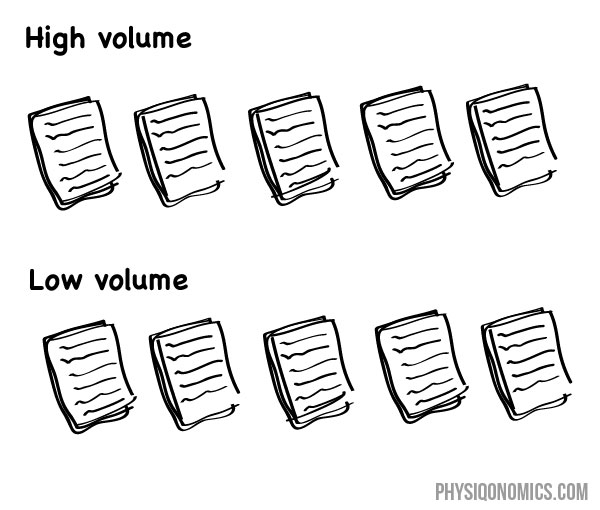
First: they evaluated the effects of volume within each study and found that higher volumes were associated with a 3.9% greater average increase in muscle mass compared with lower volumes.
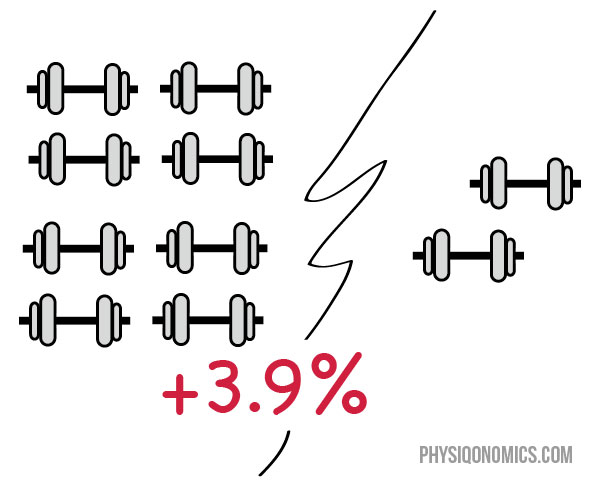
They then split the data into two groups:
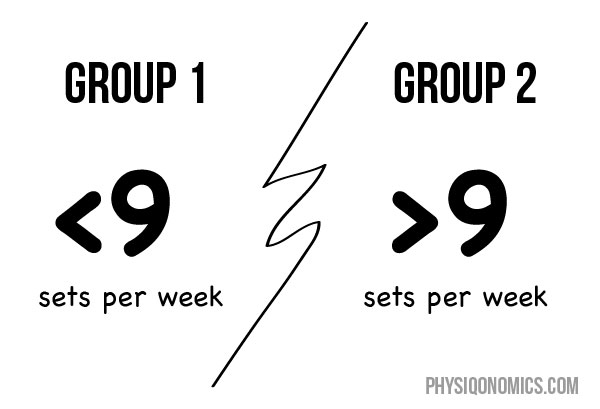
The lower volume condition was associated with a gain of 5.8% while the higher volume condition produced a gain of 8.2%.
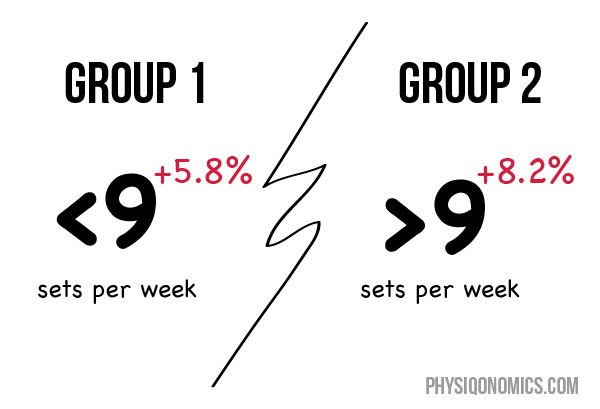
Lastly, they split the studies into three groups:
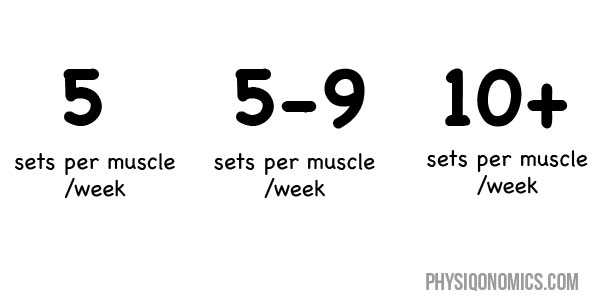
There was a clear dose-response relationship between volume and hypertrophy.
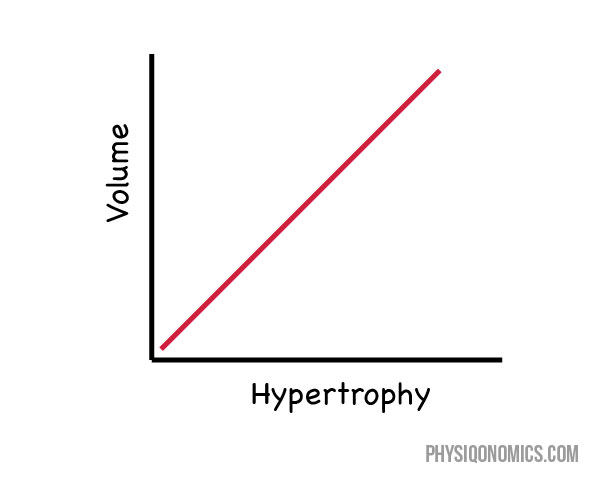
Application
- Low volume approaches do build muscle. Performing less than 5 weekly sets per muscle produced an average gain of 5.4%. So if you have a busy schedule and can’t spend hours at the gym, you can rest assured lower volume training will suffice for muscle growth.
- However, higher volume approaches (minimum of 10 weekly sets per muscle) seem to be better if you’re wanting to maximise muscle growth. The higher volume studies (10+ sets) showed double the gains as performing less than 5 weekly sets per muscle (9.8% vs 5.4%).
- It’s not black or white: You should have periods of high volume training and periods of low volume training. Example: 4-6 weeks of building up volume and then 2-3 weeks of reduced volume.
- “Volume Threshold”: Everyone has an individual volume threshold – you should do enough so you’re progressing but not so much you risk injury or burning out. Build up your volume ‘capacity’ over time.
- The more advanced you become the more volume you’re going to need to continue eliciting growth.
Found this useful? Well, how about sharing it with all your friends?